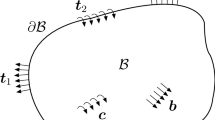Abstract
The percolation behaviour and electrical conductivity in unidirectional composites made of short conductive fibres embedded in an insulating matrix were examined by Monte Carlo simulation as a function of aspect ratio, volume fraction and angle. The unidirectional composite exhibited a highly anisotropic percolation behaviour with respect to the fibre direction for both fibre normal and fixed-length distribution. For the direction parallel to the fibre, the electrical conductivity increased exponentially with the volume fraction and the exponent increased as the aspect ratio increased. The conductivity in the transverse direction exhibited a sharp transition, from zero to nearly the same level as parallel conductivity at the critical volume fraction. The percolation threshold for the transverse direction also increased with aspect ratio up to 20, above which it decreased in parabolic manner. Both the threshold volume fraction and transient increase in conductivity in the transverse direction varied parabolically with aspect ratio, the maximum being an aspect ratio of 20.
Similar content being viewed by others
References
D. M. Bigg,Polym. Eng. Sci. 19 (1979) 1188.
S. R. Gerteisen, in “37th Annual Technical Conference Society of the Plastics Industry”, Vol. 11-E (1982) p. 1.
M. G. Moss, R. N. Guzmar et al., Society of Plastics Engineers Canada, Proceedings of ANTEC (1991) p. 770.
I. Balberg andS. Bozowski,Solid State Commun. 44 (1982) 551.
S. W. Wang andA. A. Orgale,Compos. Sci. Technol. 46 (1993) 93.
R. M. Simon, in “35th Annual Technical Conference Society of the Plastics Industry”, Vol. 6-A (1980) p. 1.
S. R. Gerteisen, in “37th Annual Technical Conference of the Society of the Plastics Industry”, Vol. 11-E (1982) p. 1.
G. E. Pike andC. H. Seager,Phys. Rev. B. 10 (1974) 4.
I. Balberg andN. Binenbaum,ibid. 28 (1983) 7.
I. Balberg, N. Binenbaum andN. Wagner,Phys. Rev. Lett. 52 (1984) 1465.
J. Gurland,Trans. Mater. Soc. AIME 236 (1966) 642.
A. F. Whitehouse, C. M. Warwick andT. W. Clyne,J. Mater. Sci. 26 (1991) 6176.
V. K. S. Sante andS. Kirkpatric,Adv. Phys. 20 (1971) 325.
B. J. Last andD. J. Thouless,Phys. Rev. Lett. 27 (1971) 1719.
K. Tanaka andT. Mori,Acta Metall. 18 (1970) 931.
Y. Takao, T. W. Chou andM. Taya,ibid. 35 (1987) 651.
N. Ueda andM. Taya,J. Appl. Phys. 60 (1986) 459.
F. Carmona, F. Barreau, P. Delhaes andR. Carnet,J. Physique 41 (1980) L-531.
Author information
Authors and Affiliations
Rights and permissions
About this article
Cite this article
Lee, Y.H., Kim, H.C. Three-dimensional electrical percolation behaviour in conductive short-fibre composites. J Mater Sci 30, 3033–3036 (1995). https://doi.org/10.1007/BF01209213
Received:
Accepted:
Issue Date:
DOI: https://doi.org/10.1007/BF01209213




